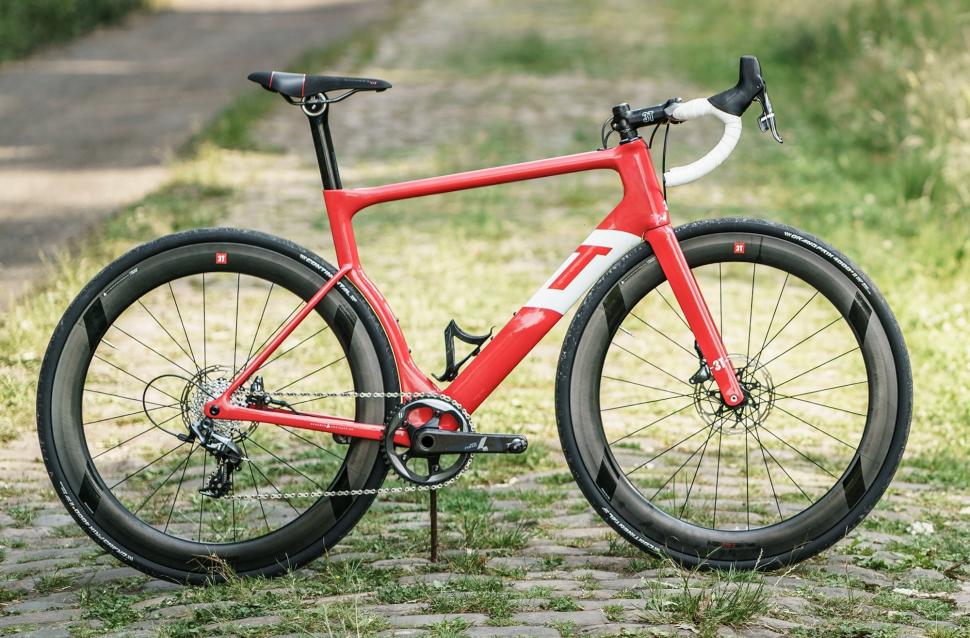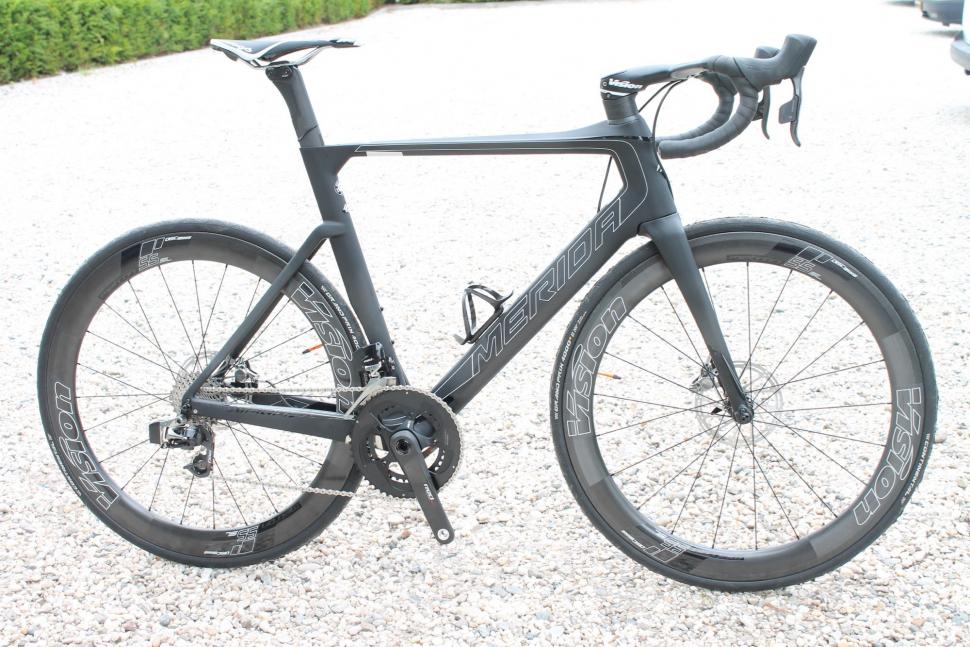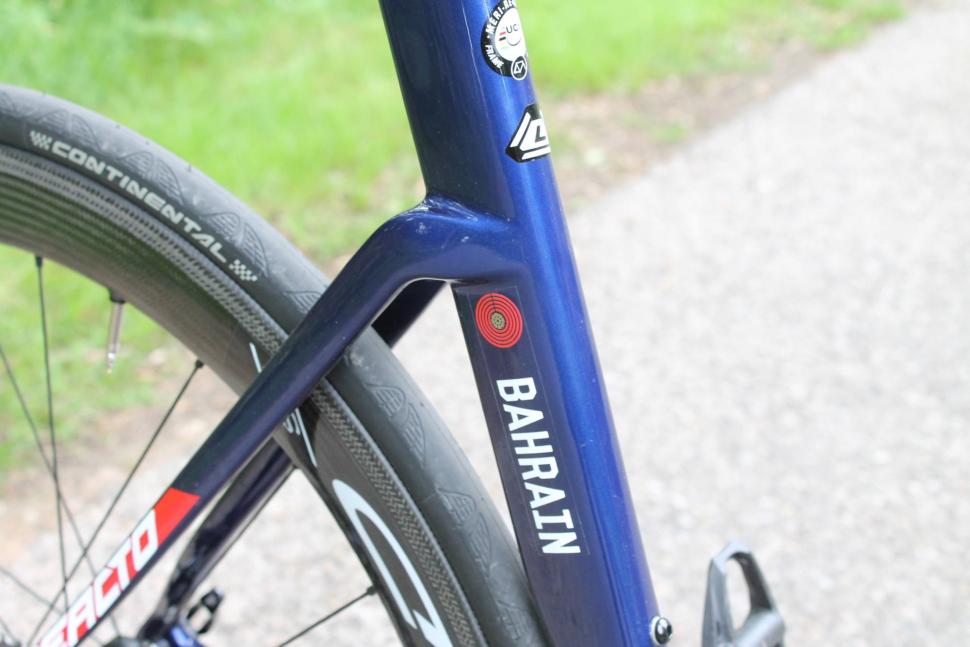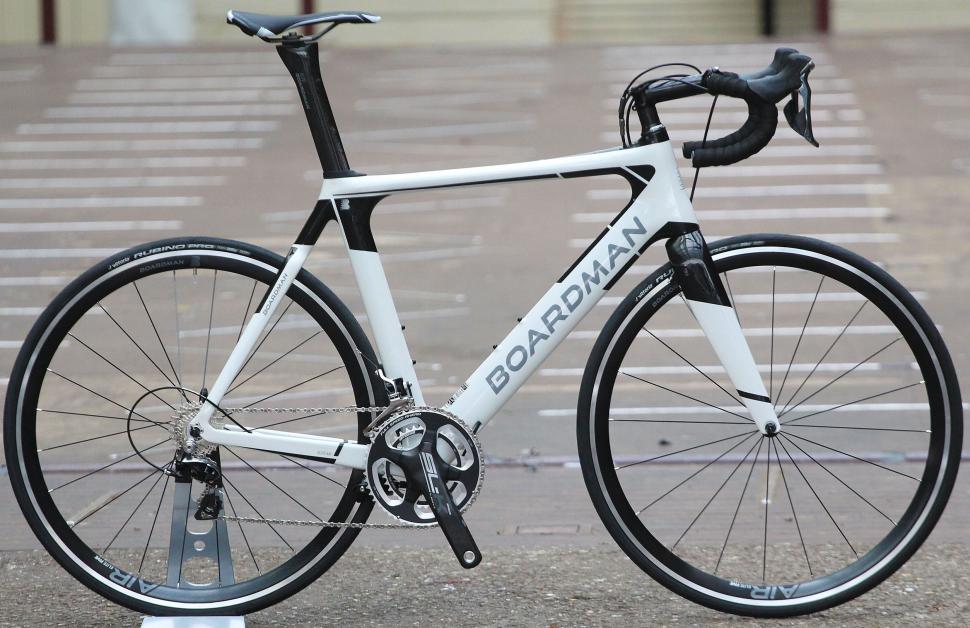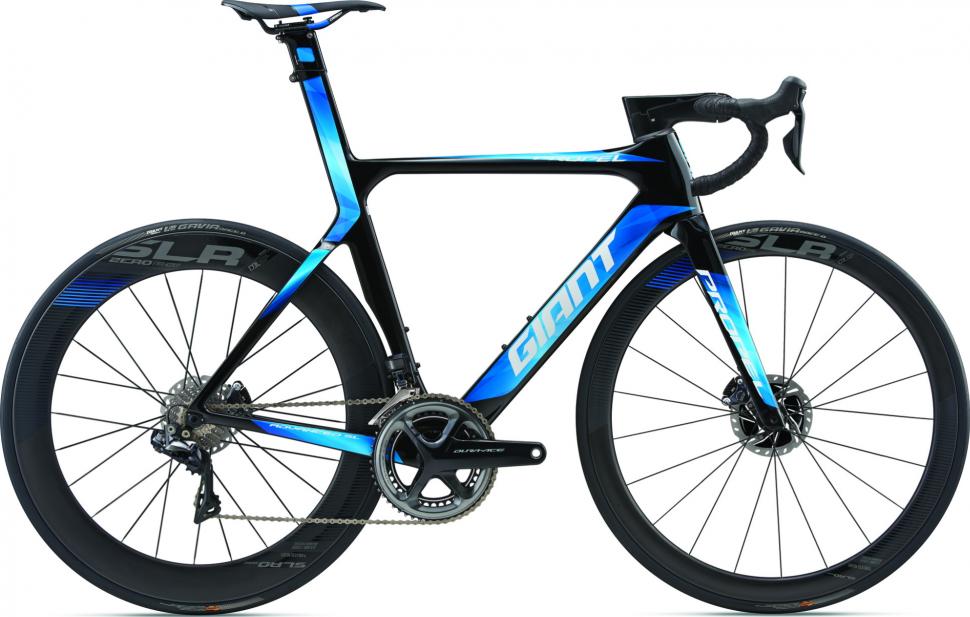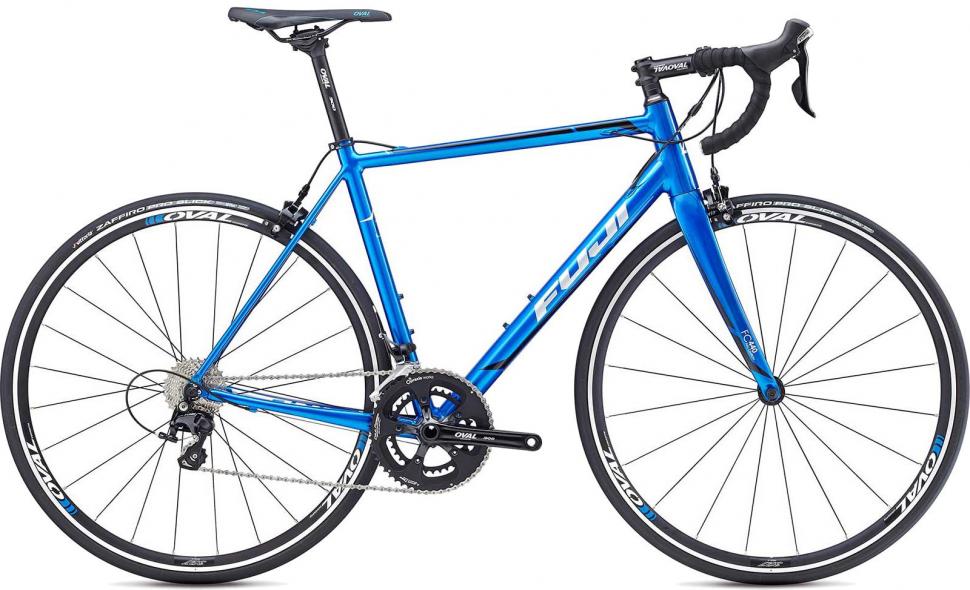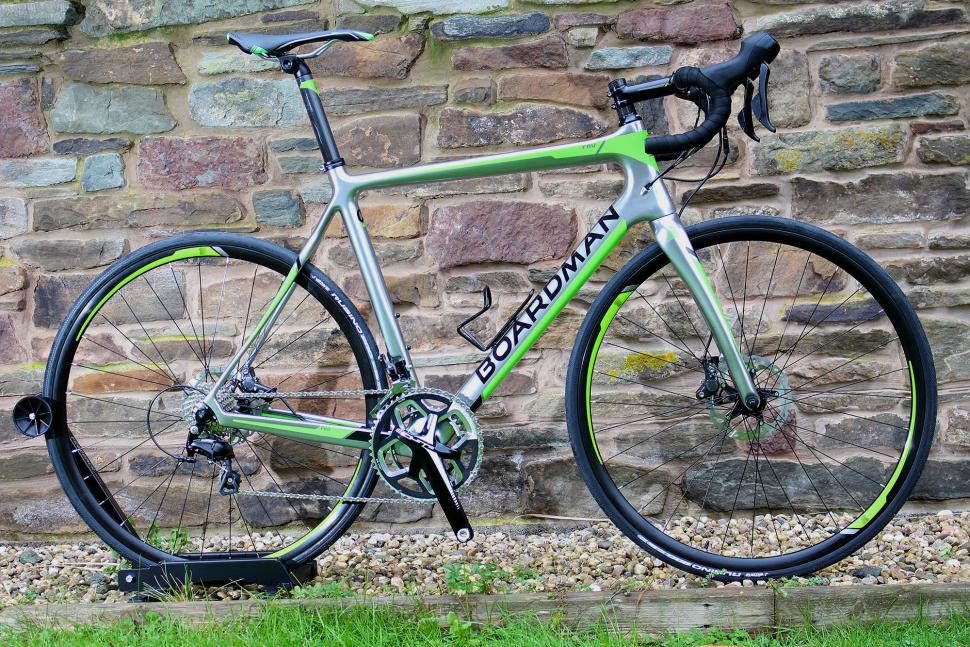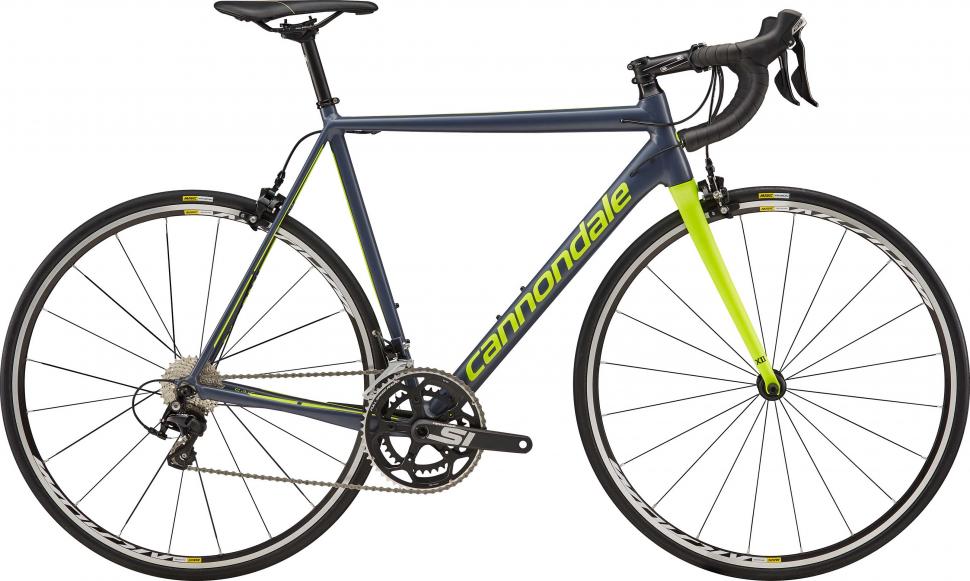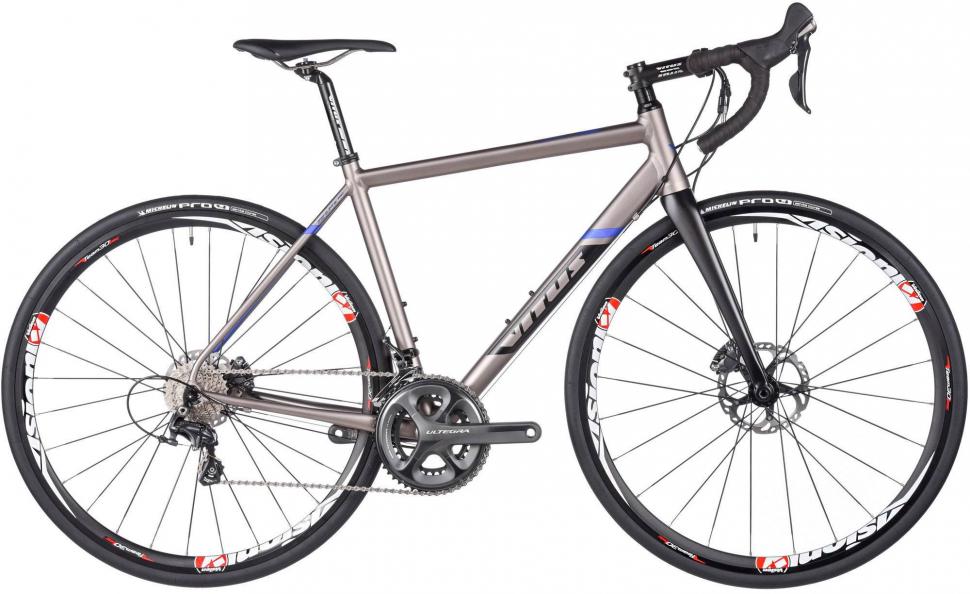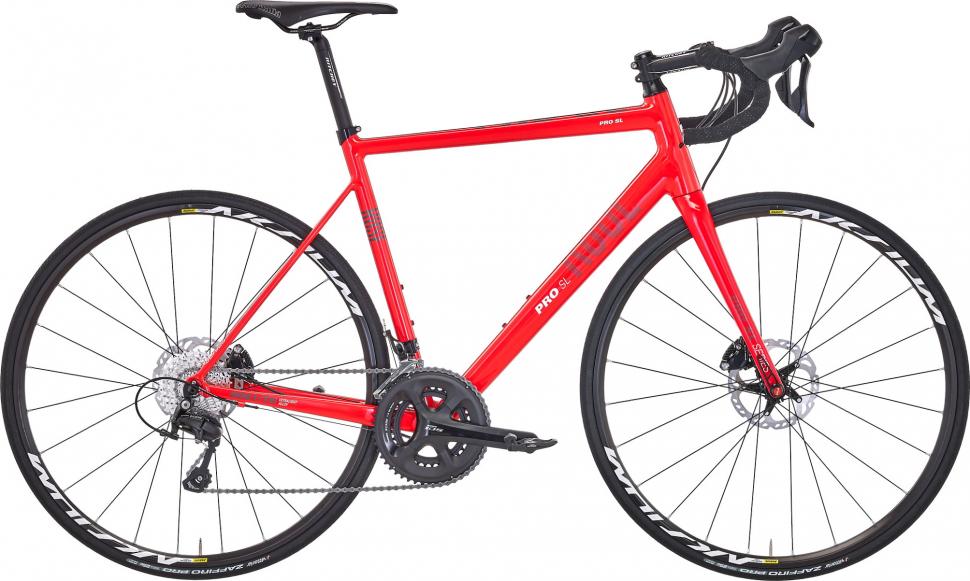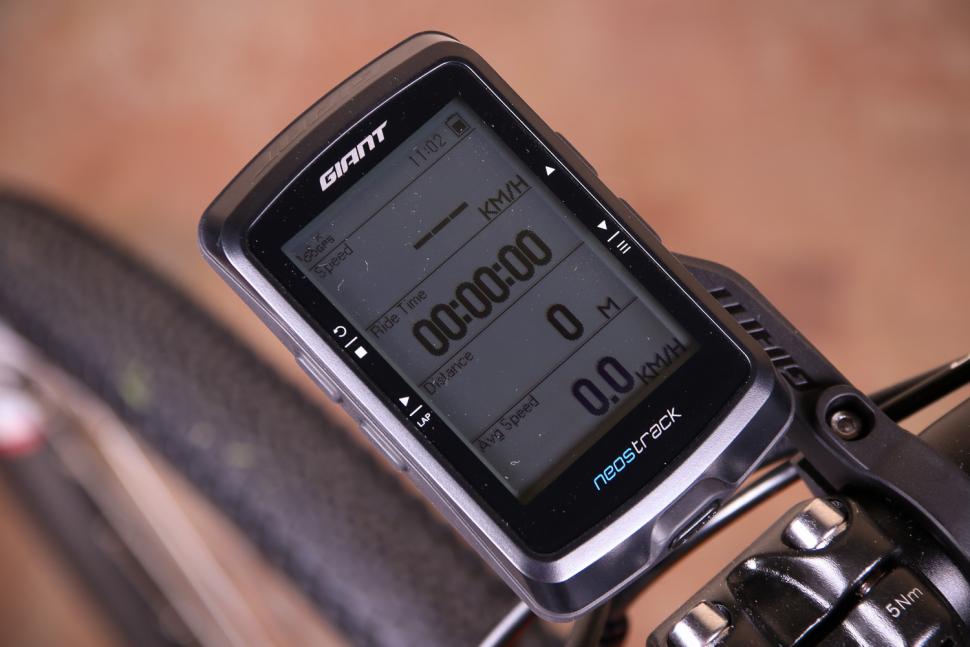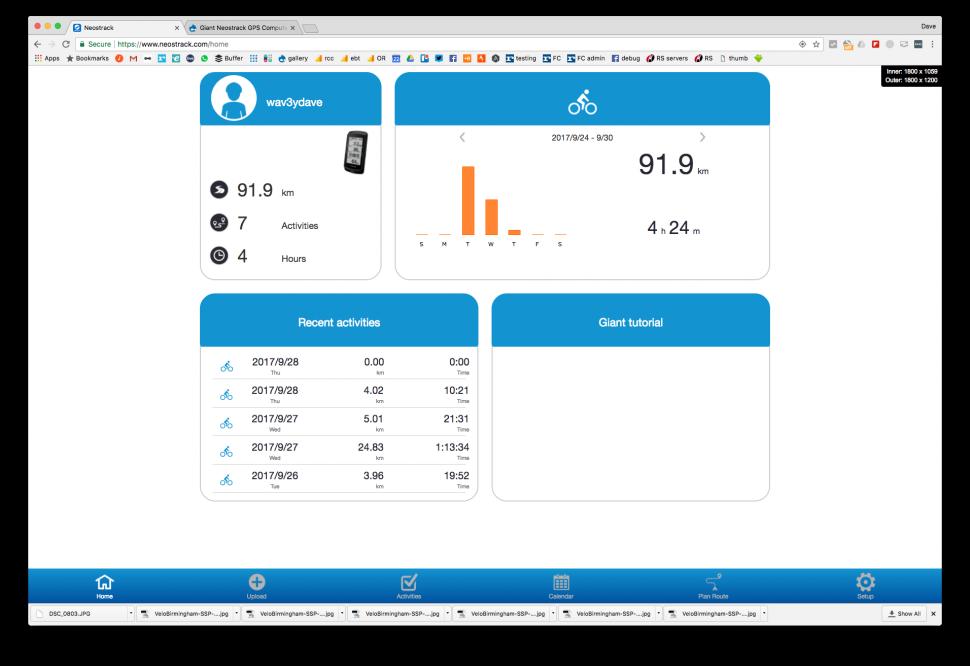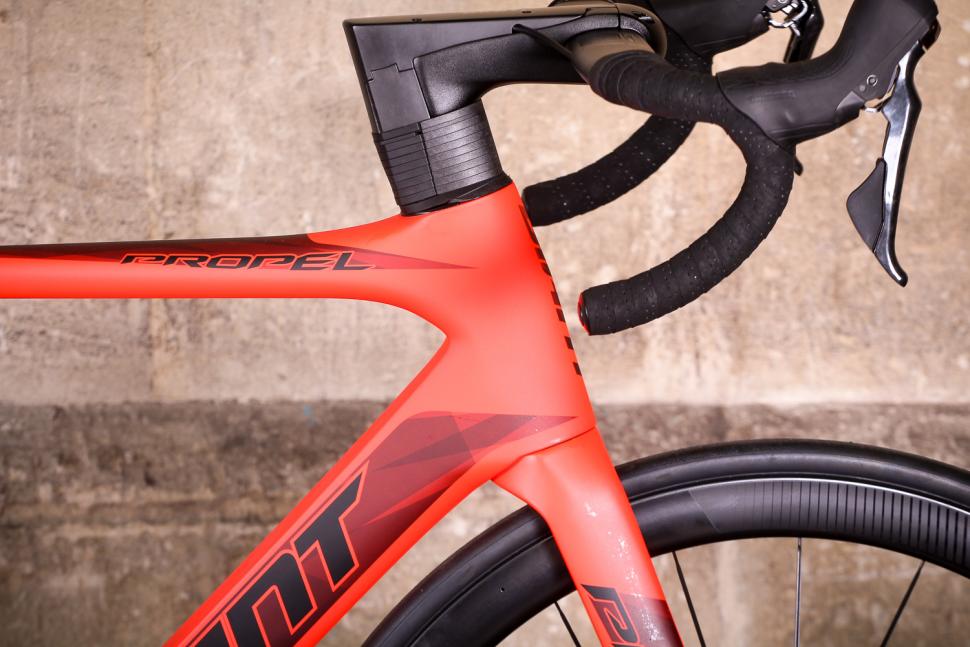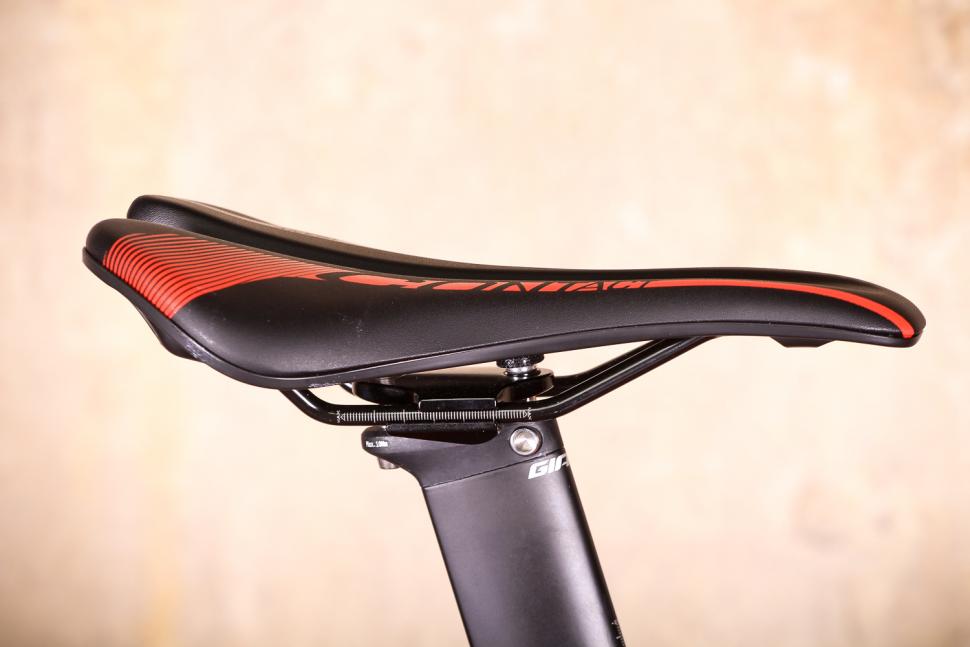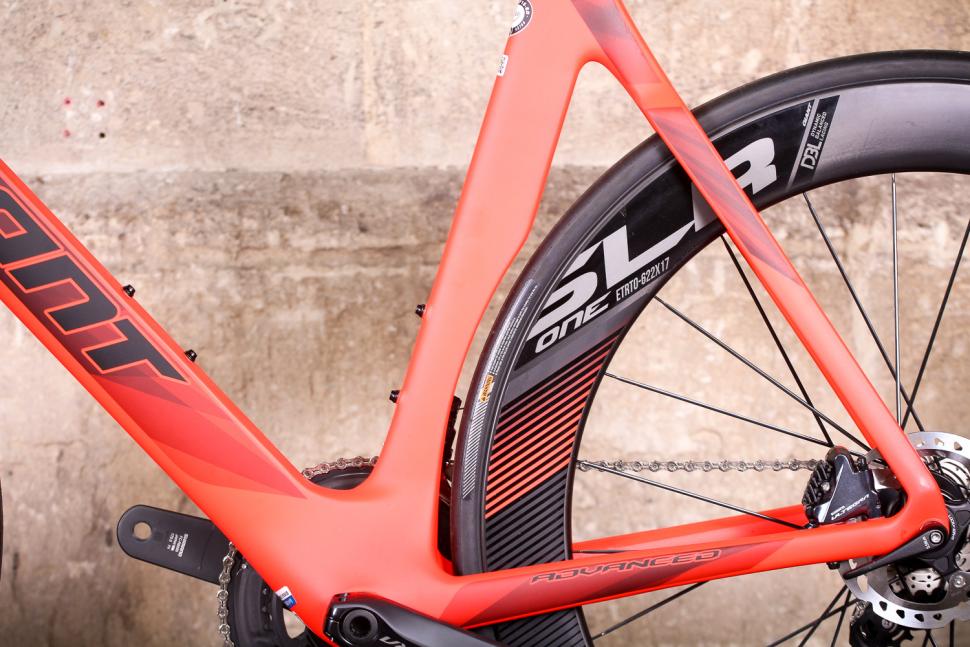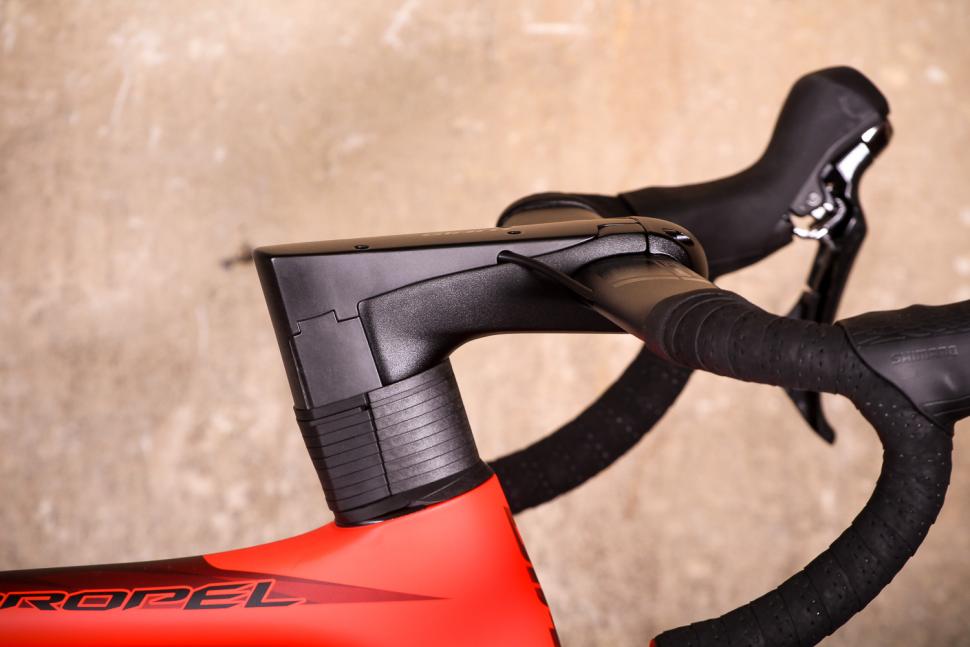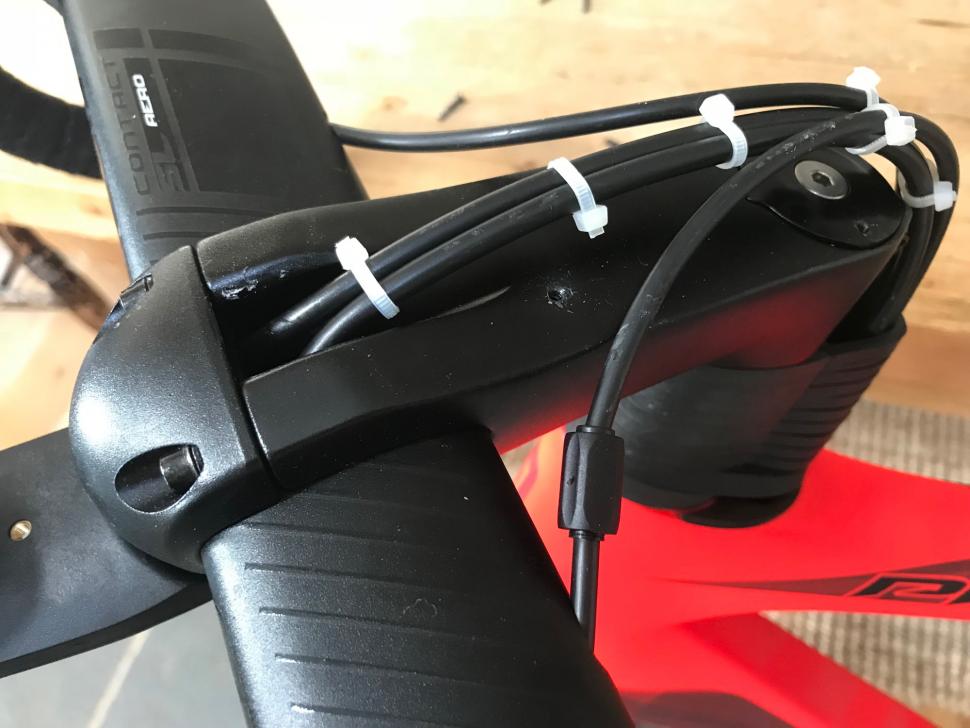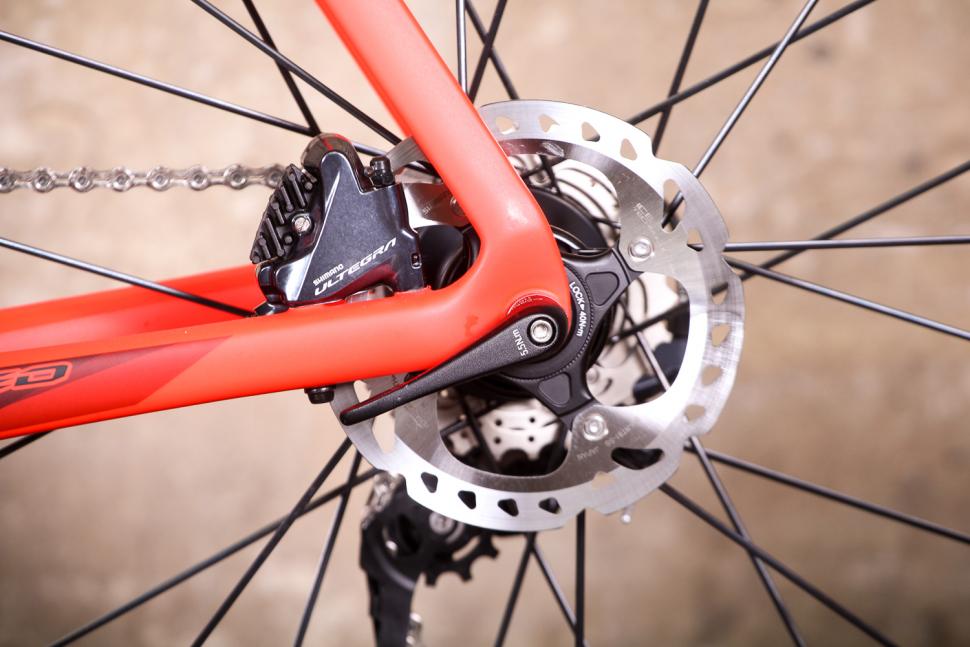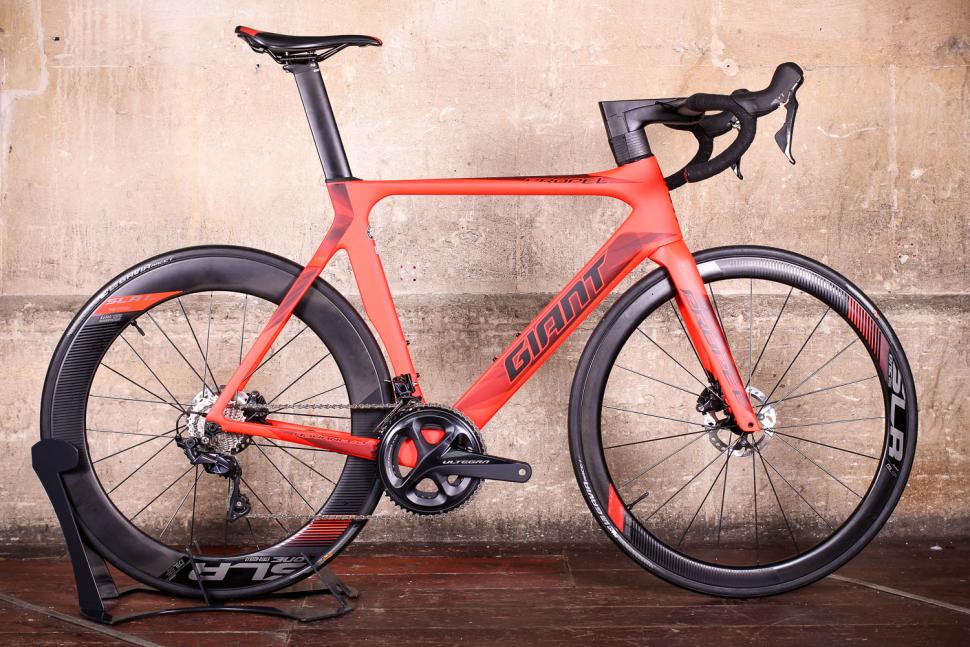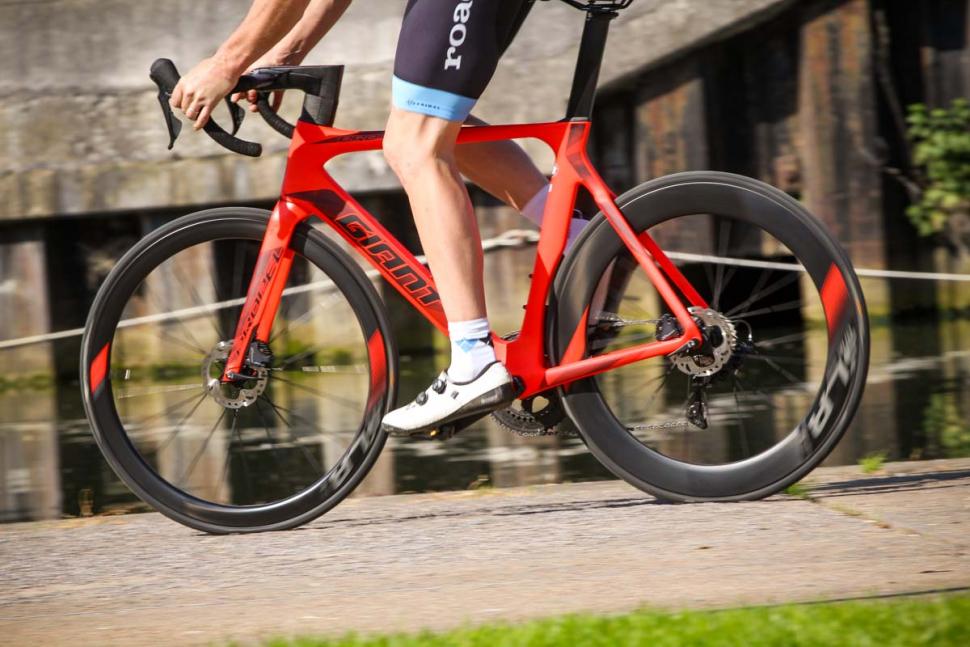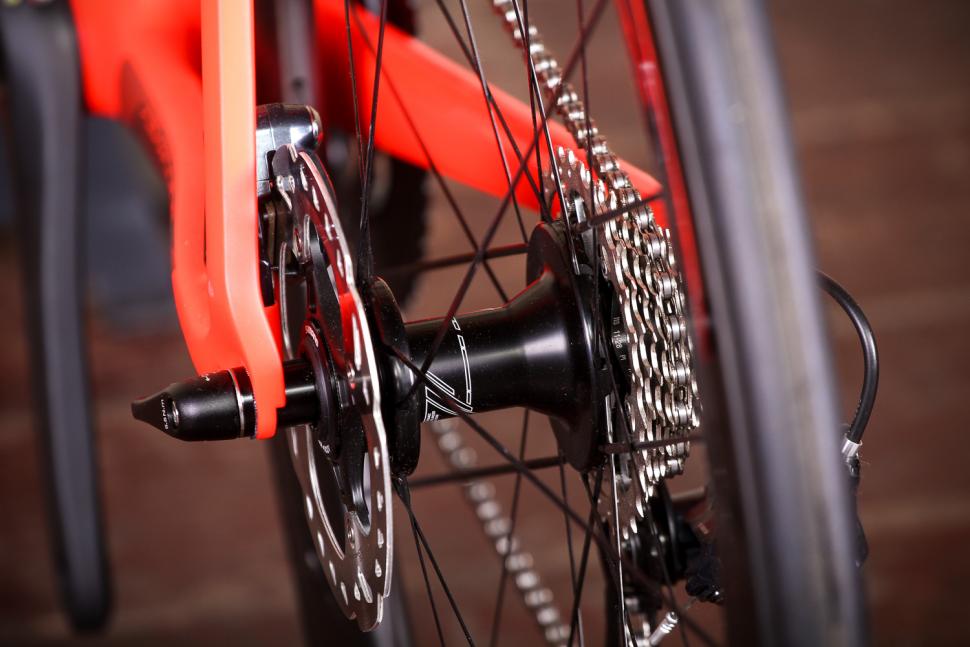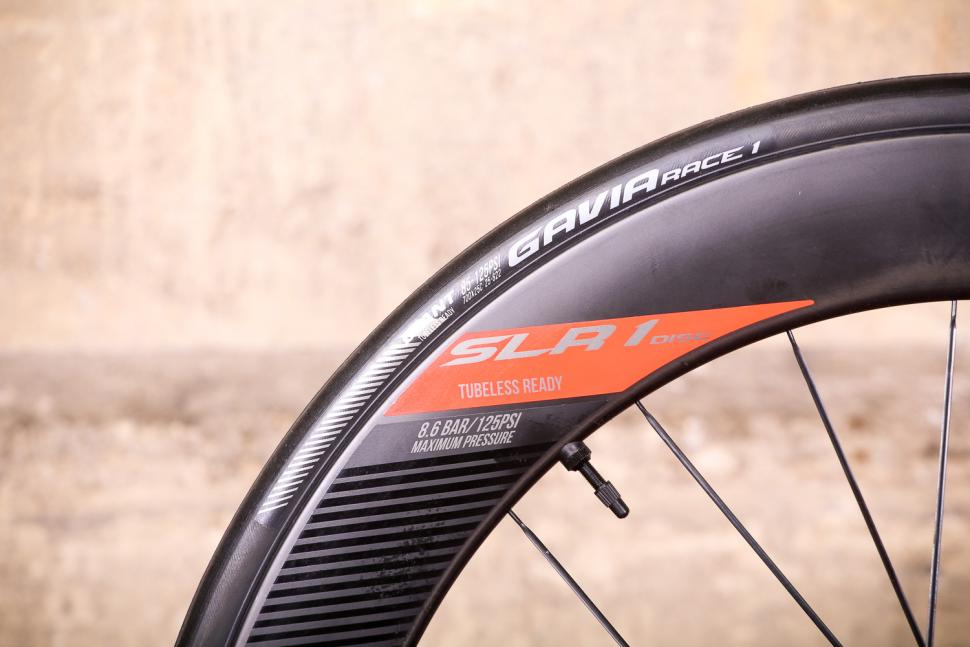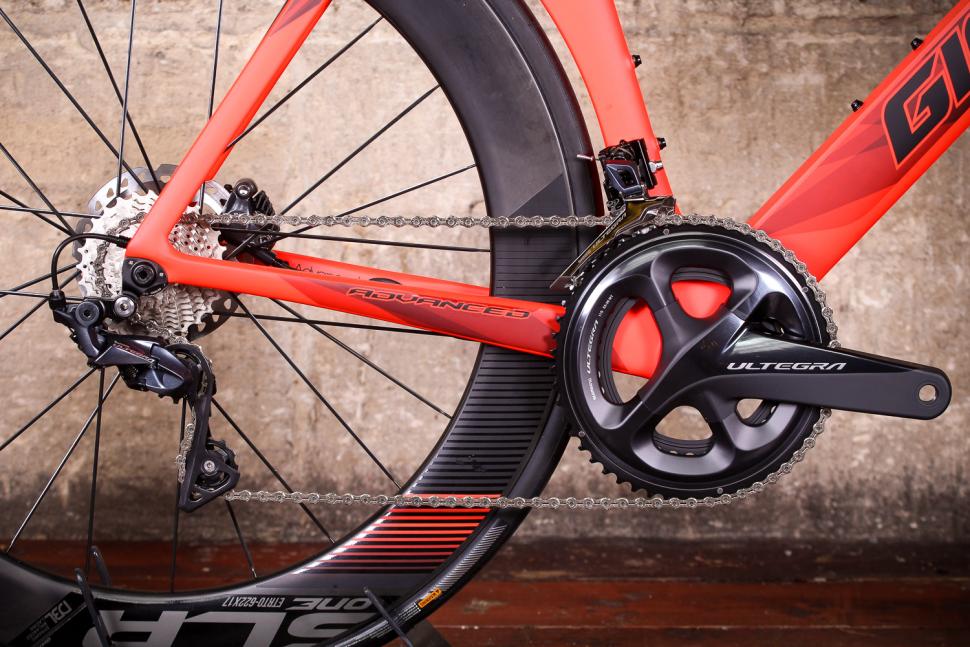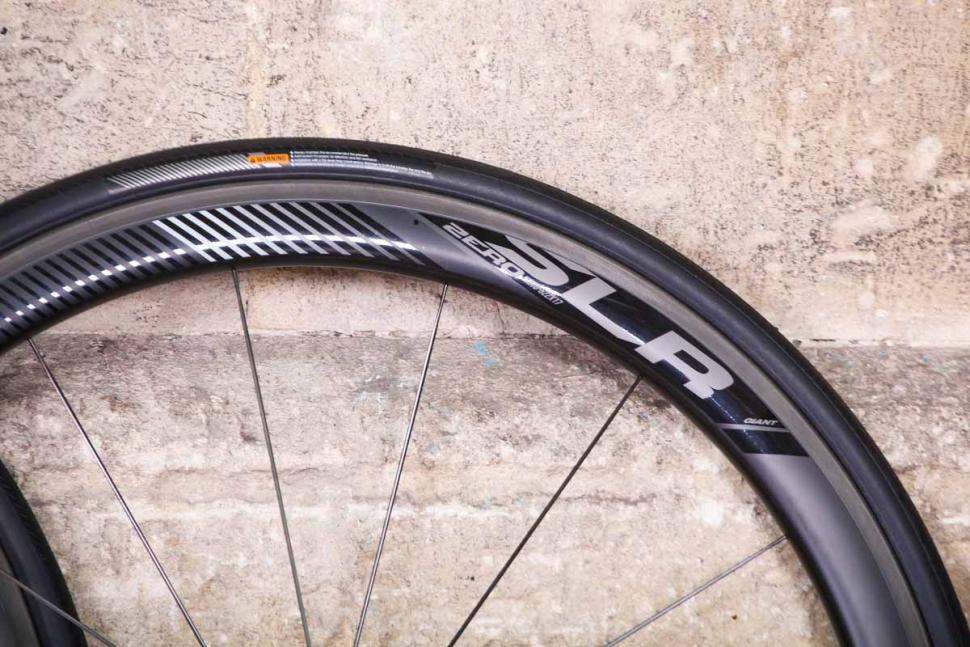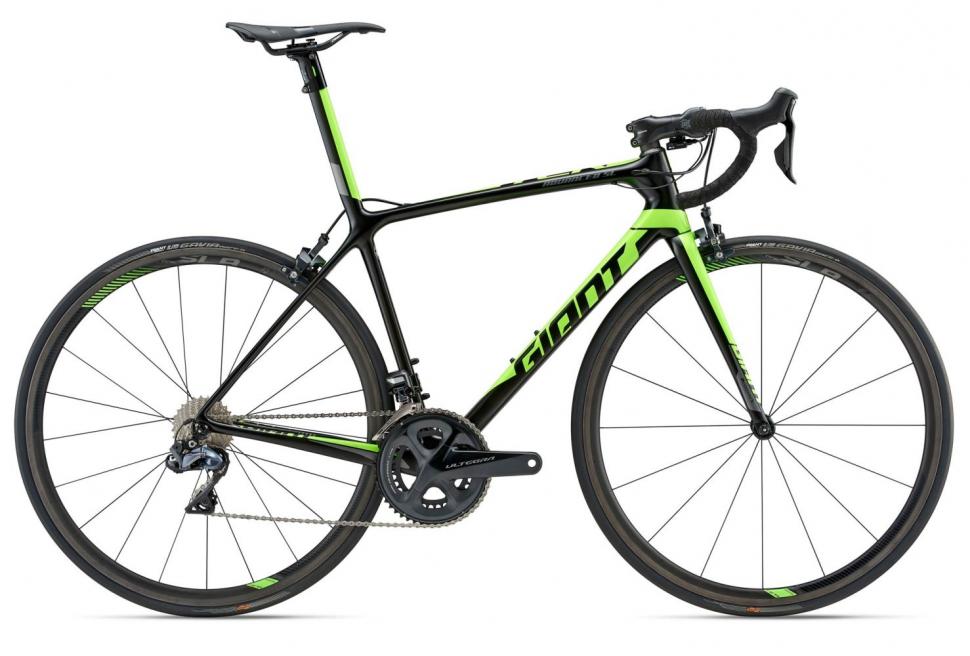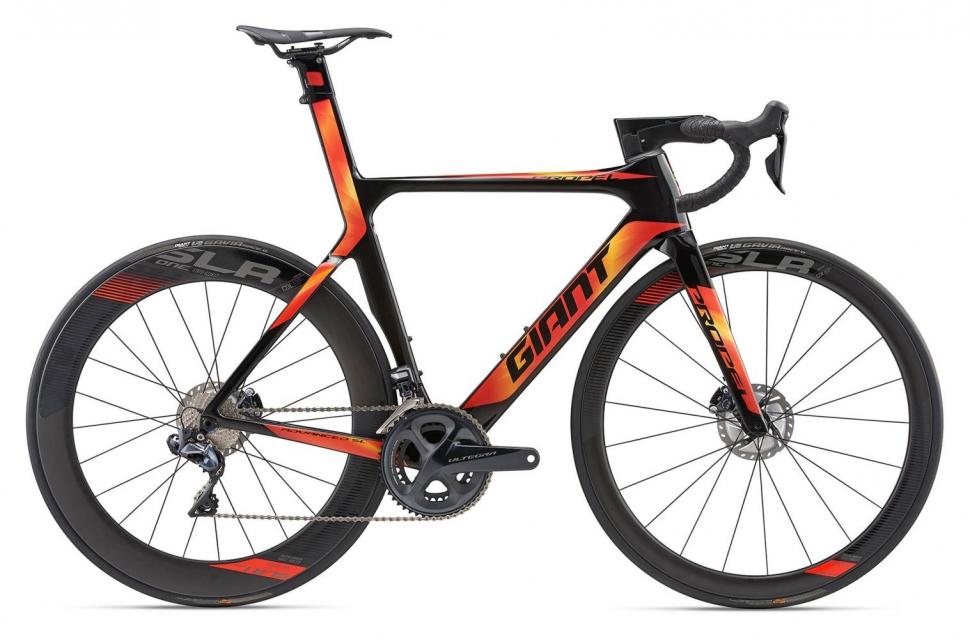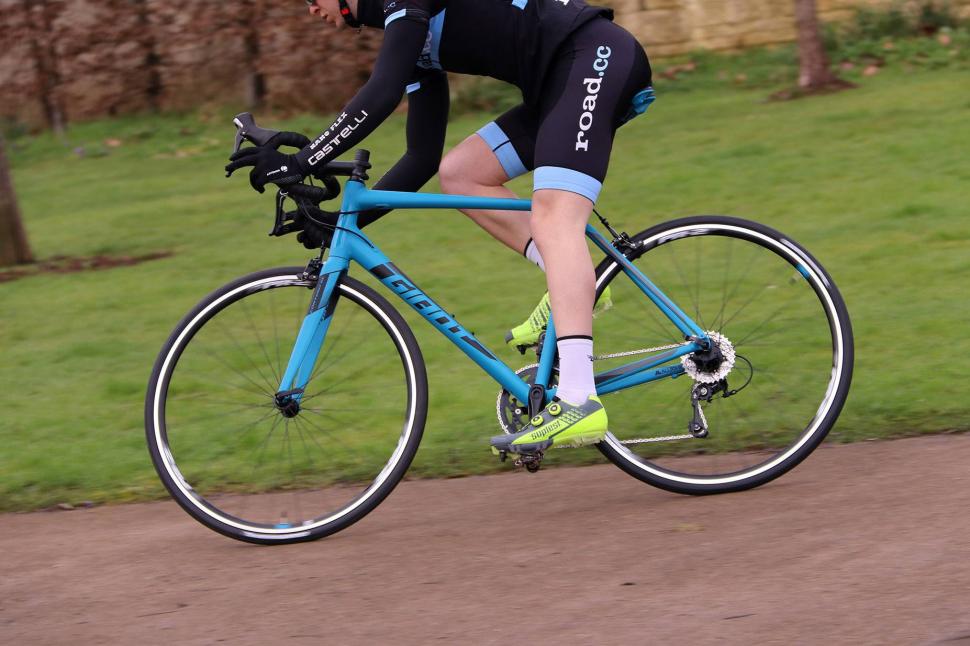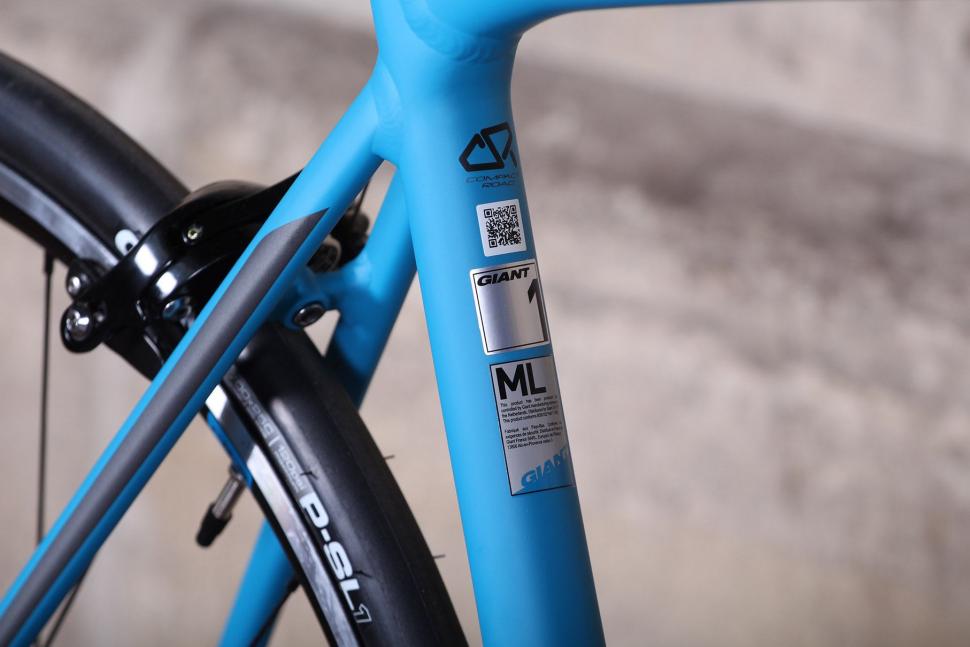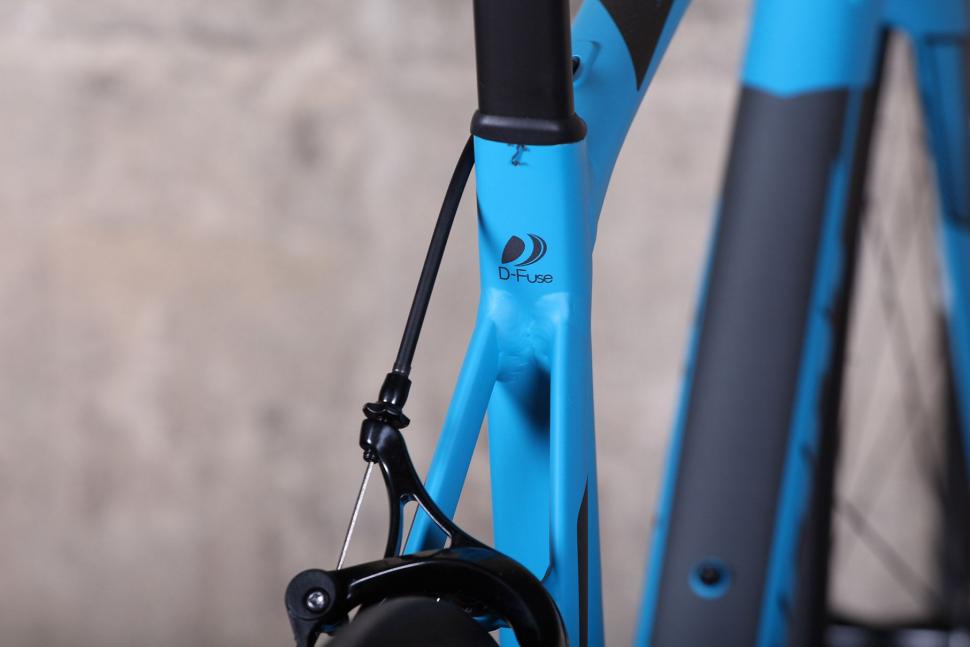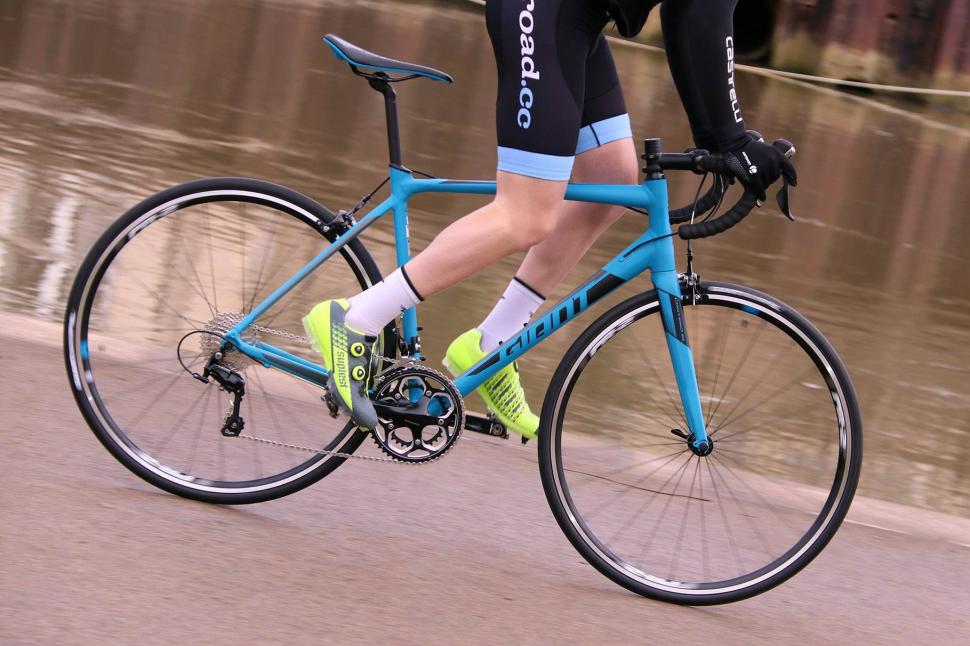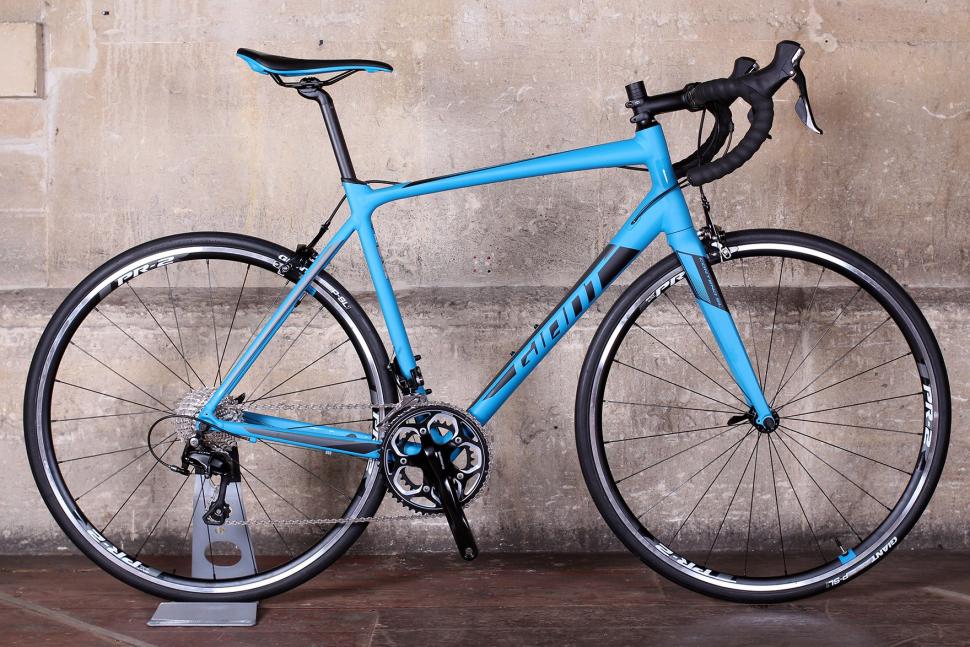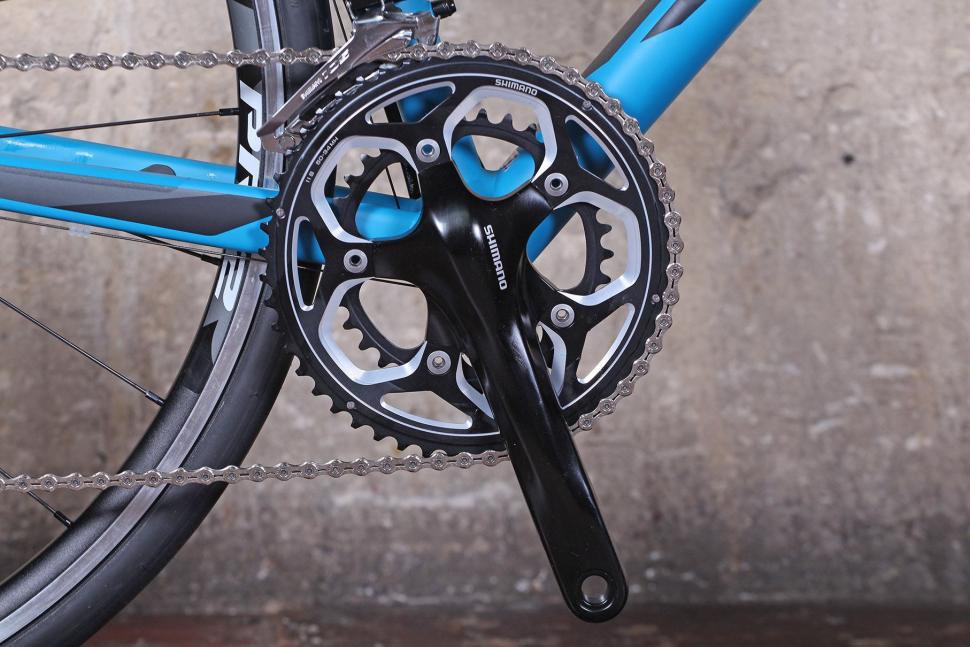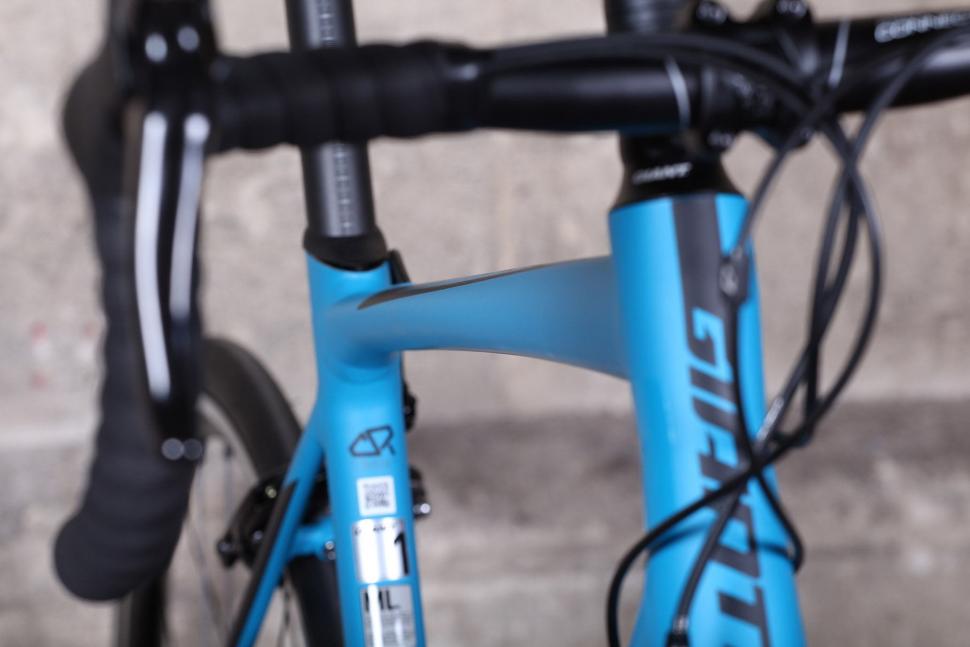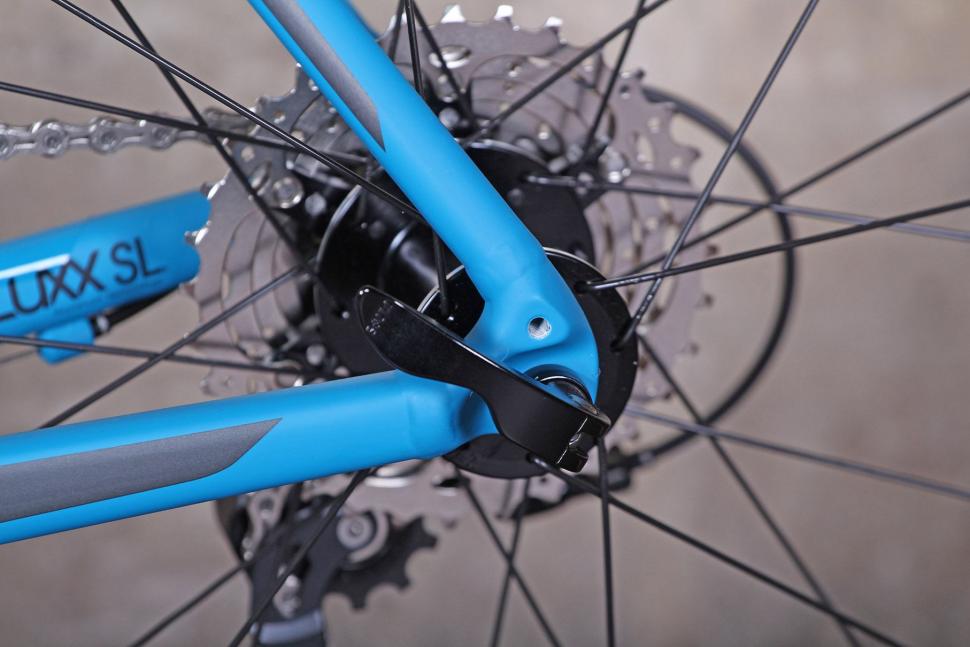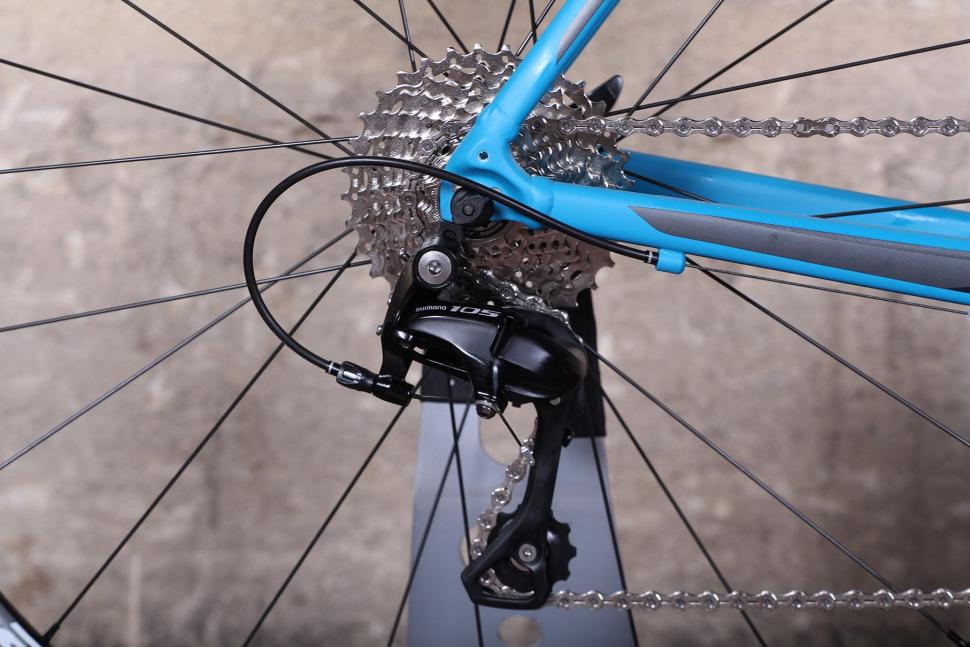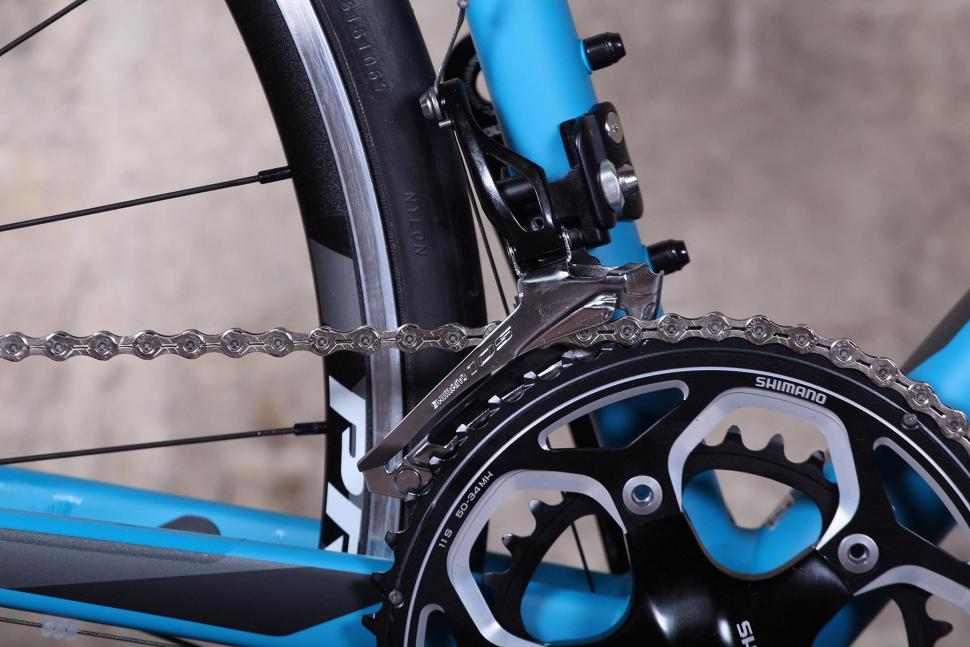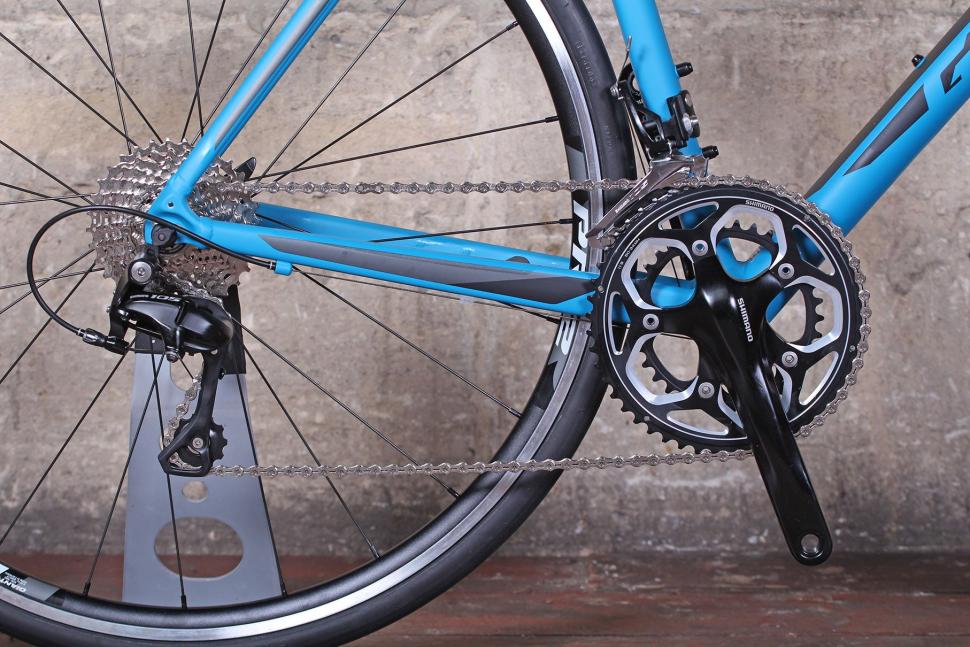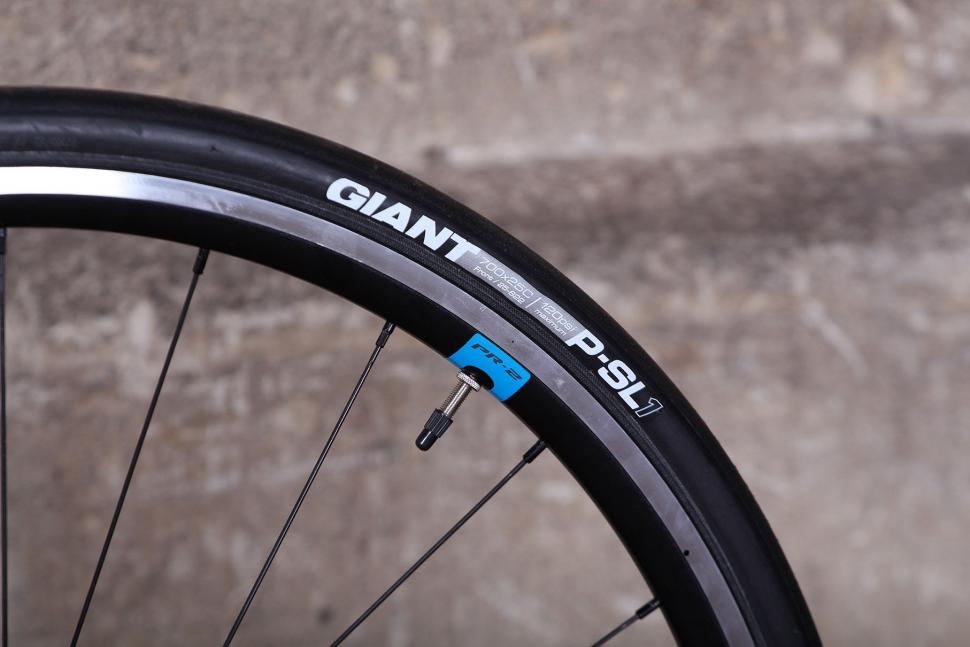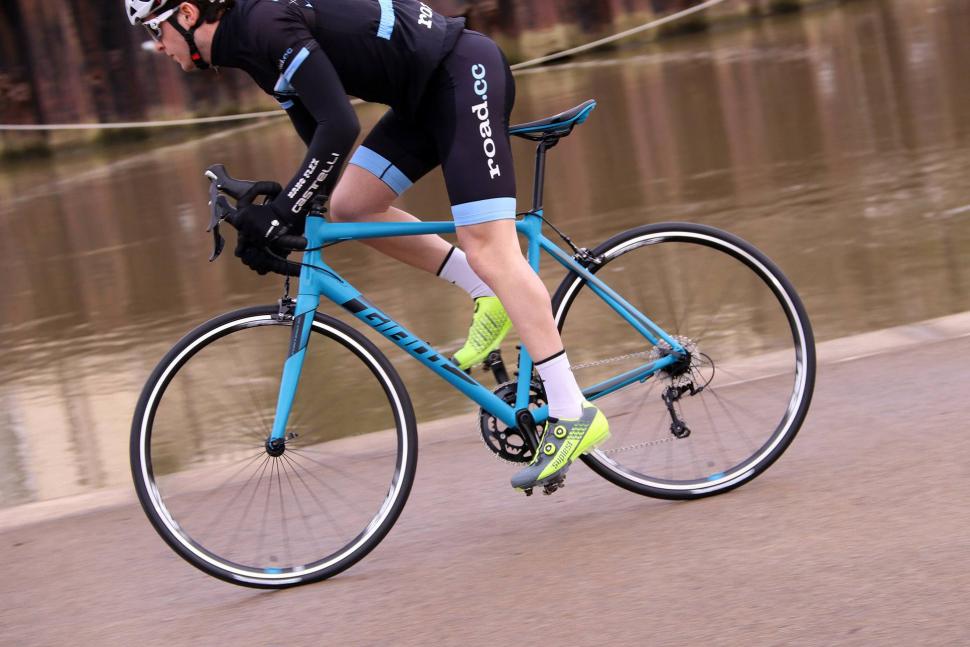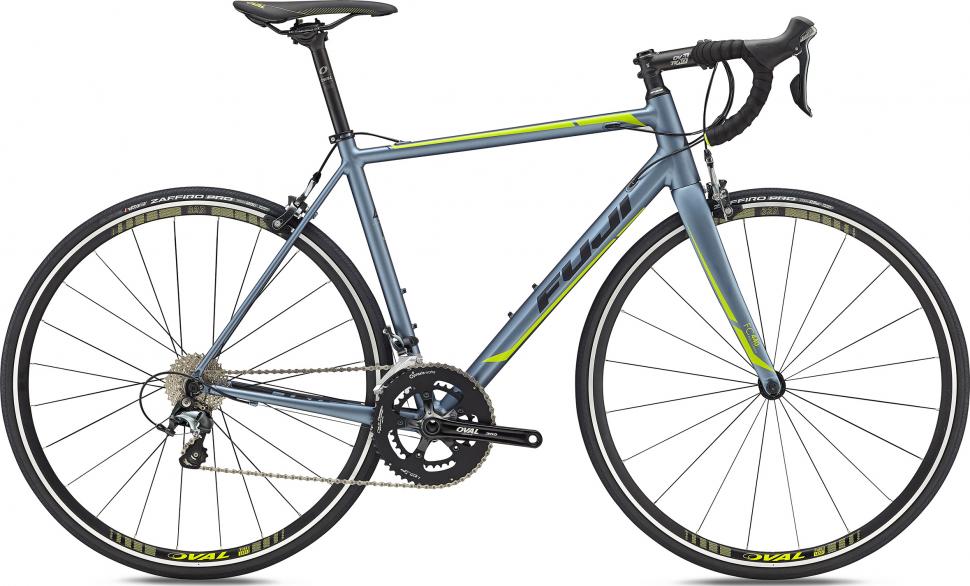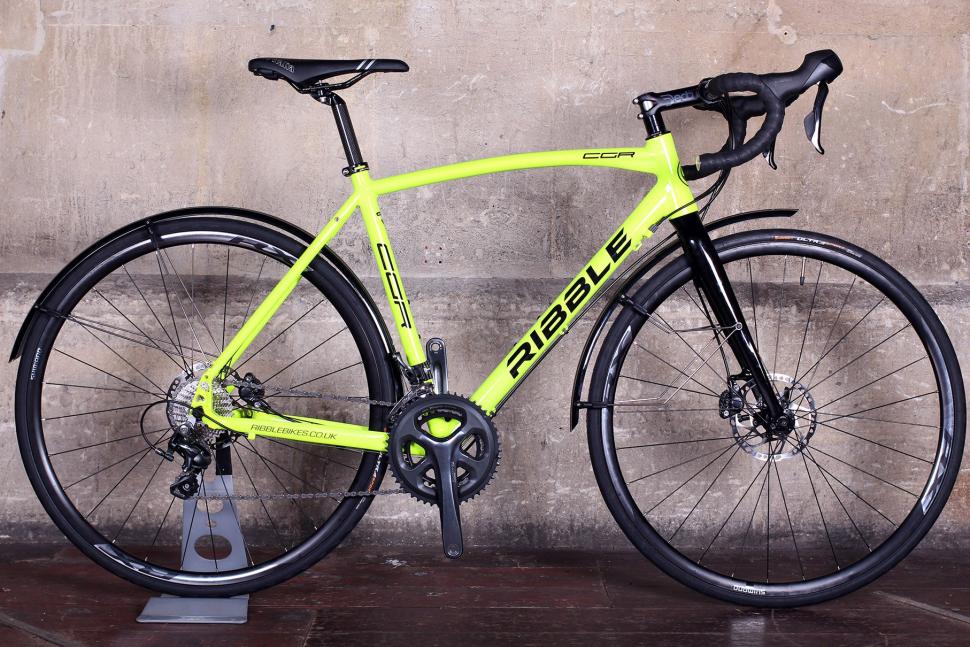After a faltering start, it looks like disc brake-equipped road race bikes are here to stay with ever more manufacturers bringing out new models for 2018.
The UCI (cycle sport’s world governing body) first introduced a trial period for using disc brakes in the pro peloton at the end of the 2015 season, but suspended it following injuries to riders in the 2016 Paris-Roubaix that were alleged to have resulted from disc rotors.
Read our story from last year: Have disc brakes really led to injuries in peloton?
The trial was later resumed with slight modifications to disc rotors demanded, and riders such as sprinter Marcel Kittel have been racing on disc-equipped bikes throughout the 2017 season.
Check out Marcel Kittel’s Tour de France stage winning Specialized S-Works Venge ViAS Disc here.
Why disc brakes at all? The promised benefits are greater modulation and more power, especially in wet conditions, no fade on long descents, rims that don’t wear out, less maintenance and longer lasting brake pads.
On the other hand, disc brakes are currently heavier than rim brakes and there are some concerns about their impact on aerodynamics, although Giant, for example, claims that its new Propel Disc has less drag than its rim brake predecessor.
Here's a roundup of some of the coolest road bikes with disc brakes that were added to the UCI’s list of approved models in 2017.
Trek Emonda £2,650-£6,000

Trek has just added disc brake models to its lightweight Emonda lineup for the first time, the top level Emonda SLR Disc brake frame coming in at an astonishing claimed weight of just 665g. That’s the lightest disc brake frame that we know of. The Emonda SLR Disc fork is 350g.
Complete bikes come stock with wider 28mm tyres although Trek says that you can fit wider tyres for gravel and even adventure riding.
The Emonda SLR Disc is available in SLR 8 Disc (Shimano Dura-Ace mechanical, £5,200) and SLR 6 Disc (Shimano Ultegra, £4,000) models as well as a frameset (£2,590).
The Emonda SL Disc frame is heavier at 1,149g. The SL 7 Disc, built up with a Shimano Ultegra Di2 groupset, is £4,400 while the SL 6 Disc with the mechanical version of Shimano Ultegra is £2,650. The Emonda SL Disc frameset is priced £1,380.
Read: Trek launches superlight new Emondas.
Giant Propel£2,999-£8,999 ![Propel Advanced Pro Disc.jpg Propel Advanced Pro Disc.jpg]()
Giant has for the first time added disc brakes to its Propel aero road bikes for 2018, and claims that the flagship model, the Propel Advanced SL Disc, has the highest stiffness-to-weight ratio of any bike in its class and a lower drag coefficient at a wider range of yaw angles than its non-disc-brake predecessor.
“This is because the location of traditional callipers (either in front or behind the fork crown/ legs) creates 'dirty' air,” says Giant. “Opening up the fork crown area (by placing the disc-brake callipers down at the hub) means that the air hitting the new disc-brake calliper has already been disrupted by the leading edge of the tyre/wheel. This effect is further enhanced by an asymmetric fork that helps smooth out airflow over the calliper.”
Giant says that the Propel Disc had a three year development phase involving its engineers, Team Sunweb pro racers and aerodynamics experts at the Aero Concept Engineering facility in Magny-Cours, France.
Find out more about Giant's Propel Disc bikes here.
The range featurnd aero wheelsets with different rim depths front and rear, the idea being to reduce drag without comproes updated frame profiles and a new combined aero handlebar and stem with internal cable routing, amising control or power transmission.
Read our guide to Giant’s 2018 road bikes here.
3T Strada£3,600 (frame, fork, headset, seatpost)
3T’s Strada is a new disc-equipped road bike that’s built around wide tyres and a 1x (single chainring, no front derailleur) groupset. It has been developed by Cervelo founder Gerard Vroomen
The Strada uses tubes that are shaped to minimise drag, the down tube being designed to push air around a low-mounted bottle. The transitions at the key junctions (front wheel to down tube and from seat tube to rear wheel) have been reduced as much as possible, which is claimed to further reduce drag.
3T says that going with disc brakes allows it to make its Fundi fork stiffer and provide improved aerodynamics because the crown is closer to the front wheel.
Perhaps the biggest deviation from tradition with the new Strada is the elimination of the front derailleur. 3T reckons that a 1x system gives you all the gears you need with fewer components, lower weight and less drag.
Check out our 3T Strada video with Gerard Vroomen.
Merida Reacto£2,450-£9,500
Merida’s updated Reacto aero road bike is available in both disc brake and rim brake models.
Merida has slimmed down the Reacto’s tubes to improve aero efficiency, introduced a lower seatstay connection with the seat tube and added a one piece cockpit.
Merida also says that it has improved comfort through the redesigned seatstays and given its S-Flex seatpost a slimmer cross section and a bigger ‘window’ – the notch that’s cutaway to add more downward movement.
The disc brake Reactos come with cooler technology like Merida uses on its Sculturas. There’s a forged aluminium component between the brake and the frame/fork that’s designed to allow heat to dissipate through CNC-milled cooling fins. The idea is that this reduces the amount of heat that gets transferred to the carbon-fibre on long descents.
The CF4 version of the disc brake frame uses the RAT (Rapid Axle Technology) first introduced by Focus for quick wheel changes in race situations, while the CF2 version has threaded 12mm thru axles.
Find out more about the 2018 Merida Reactos here.
BMC Teammachine£4,450-£10,000
You can now add the Teammachine to the growing list of race bikes equipped with disc brakes. BMC claims a weight of just 815g for the disc brake frame, versus 790g for the rim brake version. The disc frameset has an asymmetric fork to cope with the braking forces.
BMC says that the Teammachine is stiffer, lighter and more compliant than before, but you’d probably have guessed that.
While the new frame bares a resemblance to the previous version, BMC has refined all the tube profiles to balance the stiffness and compliance. It says the bottom bracket area provides more stiffness while the compliance has also been improved for increased seated comfort, thanks in part to newly shaped seat stays creating a compact rear triangle.
Find out more about the new BMC Teammachine here.
Scott Foil Disc£3,299-£10,999
Scott’s new Foil Disc has a very similar frame to the existing rim brake model but the fork has been completely redesigned to manage the asymmetrical forces of disc brakes and to control the airflow around the front brake. Most notably, the lower sections of the fork come with aero tabs to smooth airflow over the calliper.
That fork comes with internal cable routing and enough clearance for 30mm wide tyres.
The Foil Disc uses 12mm thru axles front and rear. The front axle’s head is 25mm in diameter, the idea being that this larger than normal contact surface between the fork and axle is better able to handle the load coming from the front brake.
Pinarello Dogma F10 Disk£4,699 (frameset)
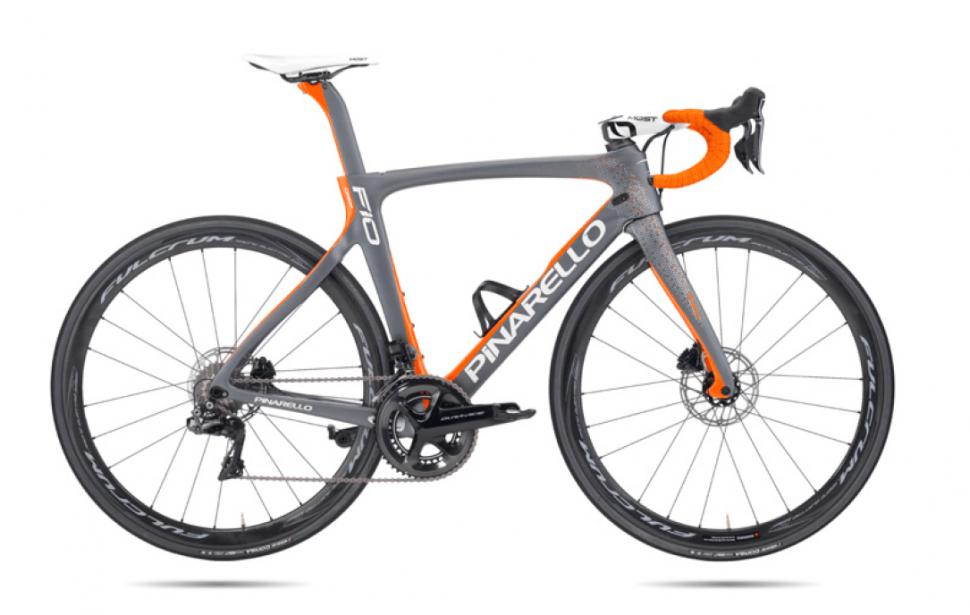
Pinarello has released a disc brake version of the bike Chris Froome rode to victory in this year’s to Tour de France, its Dogma F10.
The Dogma F10 Disk frame (don't ask us how it comes to be hovering in the picture) retains features of the rim brake model like flatback stays and a concave down tube that’s designed to shield a water bottle from the airflow. However, the disc version comes with thru axles front and rear, and the lower sections of the Onda F10 fork have ForkFlaps that are designed to improve aerodynamics around the front brake.
A thoroughbred race bike, the Dogma F10 Disk provides enough space for tyres only up to 25mm wide.
Find out more about the Pinarello Dogma F10 Disk here.
Cannondale CAAD12 Disc £1,699-£3,499
The CAAD12 is the latest in a long series of well-received aluminium bikes from Cannondale, lighter, stiffer and more comfortable than the CAAD10 and available with or without disc brakes.
Following the popular and likeable CAAD10 was always going to be a tough act, but Cannondale has succeeded not only in retaining the key qualities of the previous model but also improving the ride quality. It's nothing short of marvellous.
The CAAD12 is a finely honed bike with a level of comfort and refinement that makes you wonder why you would spend more. It's so smooth that it outshines many carbon fibre road bikes we've tested over the years.
Read our review of the 2016 Cannondale CAAD12 Disc Dura-Ace.
Bianchi Aria Disc£TBC
Bianchi has unveiled both rim brake and disc brake versions of its Aria aero road bike. The Italian brand already has the Oltre aero road bikes in its range and has only recently launched the Oltre XR3, but the Aria represents a trickle down of Aquila time trial/ triathlon design in a much more affordable, and broader, application.
You get many tried and tested aero features including a seat tube that’s cutaway around the leading edge of the rear wheel, a deeply profiled down tube and a skinny head tube.
We’ve not yet had the chance to try the disc brake version but we’ve reviewed the rim brake model and found it to be responsive and direct with sharp handling.
Read our review of the rim brake Aria here.
Vitus Vitesse Evo Disc£1,999.99 ![Vitus Vitesse Evo Disc.jpg Vitus Vitesse Evo Disc.jpg]()
The Vitus Vitesse Evo Disc offers a helluva lot for your money. It’s a carbon fibre, disc brake-equipped road bike built around a race-focused geometry and it offers a superb performance.
The Vitesse Evo Disc offers quick steering and unexpected speed. It's a thrilling and rewarding ride, backed up by decent equipment choices.
The carbon frame has been designed to be stiff through the use of oversized tube profiles and bottom bracket, and a tapered head tube. And it's a success. Stomp on the pedals and there's an intoxicating immediacy to the way it transfers your power that will have you attacking every rise and crest in the pursuit of more speed.
Check out our Vitus Vitesse Evo Disc Ultegra 2017 review here.
Cervelo R5 Disc £7,199-£7,299
The new version of Cervelo’s R5 is available in a disc brake format for the first time.
The R5 has been the brand’s lightest race-ready bike since it was launched in 2013. Where the S-series is focused on aerodynamics and the newer C-series on endurance comfort, the R-series has always been about being the light. Oh, and stiff. Cervelo says that the new R5 is considerably stiffer than the previous version at both the bottom bracket and head tube.
Cervélo has evolved its Squoval tube shapes (rounded square tube profiles) here with Squoval Max, essentially refining each tube profile and to improve stiffness and aero efficiency.
Interestingly, the disc brake frame is actually a little lighter than the rim brake version – 831g versus 850g.
Cervélo has adopted the excellent RAT thru-axles from sister company Focus, allowing for quick wheel changes, and you get enough clearance for 28mm wide tyres.
Find out more about the Cervelo R5 Disc here.
Colnago V2-R Disc £TBC

Colnago announced the rim brake version of its new V2-R back in June and then we saw the disc brake version at Eurobike in August.
The Concept is the full-on aero bike in Colnago’s range with the V2-R a lightweight all-rounder with some aero features.
The V2-R retains many of the features of the brand’s V1-R although Colnago claims that both the bottom bracket and headset stiffness have been increased.
Colnago has redesigned the top tube and head tube junction and revised the cable routing, the cables now entering a central port on the top of the down tube.
The V2-R uses the Hexlock thru-axle system that Colnago developed with suspension company Manitou. It's similar to the Focus Rapid Axle Technology in that you part twist the skewer into the opposing dropout before pushing close the lever. It speeds up wheel removal quite a bit.
Find out more about the rim brake version of the Colnago V2-R here.
We'll run another feature showing 2018's coolest disc-equipped endurance road bikes on road.cc soon, featuring the likes of Specialized, Wilier and Simplon.

